Input feature:
Rated input voltage: Single-phase AC220V±10% 50Hz,in line with the national power quality standards;
Rated input current: AC 3.5A;
Rated input power: 0.78kVA;
Rated input power factor: COSΦ≥0.95.
Output feature:
Output voltage: Peak 0~±12V;
Output current: Peak 0~50A;
Rated stabilized current precision: ≤1%(the rated current≥20%);
Rated voltage precision: ≤1%;
Display precision: 0.01A,0.01V;
Rated output efficiency: ≥90%.
Electroplating, a surface treatment technique, is a process that deposits a thin layer of metal or alloy onto the surface of another metal or material through electrolysis. It serves multiple purposes within the surface treatment industry, significantly enhancing wear resistance, conductivity, reflectivity, and corrosion resistance, while also improving aesthetics. Various types of electroplating, such as copper, nickel, gold, palladium-nickel, tin-lead, silver, zinc, ABS, and chrome plating, are available and widely utilized within the surface treatment industry.
The electroplating process comprises several key components: a cathode (the object to be plated), an anode (either the metal to be plated or an insoluble anode made of precious metals), a plating solution containing ions of the desired metal, a tank to store the solution, and a rectifier to provide direct current (DC) power. These components work together to ensure efficient and effective surface treatment through electroplating.
Electroplating rectifiers are renowned in the surface treatment industry for their good energy-saving effects, high output stability, and easily adjustable output waveforms. These features make them ideal for use in a variety of surface treatment applications.
This surface treatment technique, electroplating, is widely applied in industries like the automobile industry, where it is used for both functional and aesthetic purposes. Additionally, it is commonly used for ABS material surface treatment, enhancing the durability and appearance of these materials. Applications of electroplating within the surface treatment industry encompass a wide range, including PCB electroplating and the plating of copper, nickel, and chromium, among others.
The Plating Rectifier Equipment series of electroplating rectifiers is extensively utilized for a variety of surface treatments, including PCB electroplating, hard chrome coating, as well as plating with copper, nickel, zinc, gold, and silver, among other hardware surface treatment applications.
1)Field application diagram:
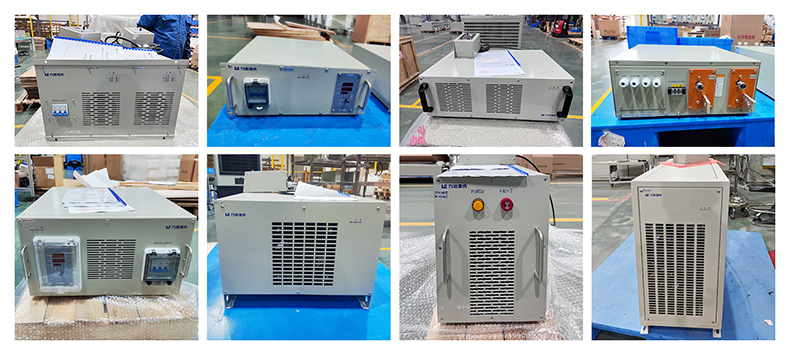
2)Industry application examples:
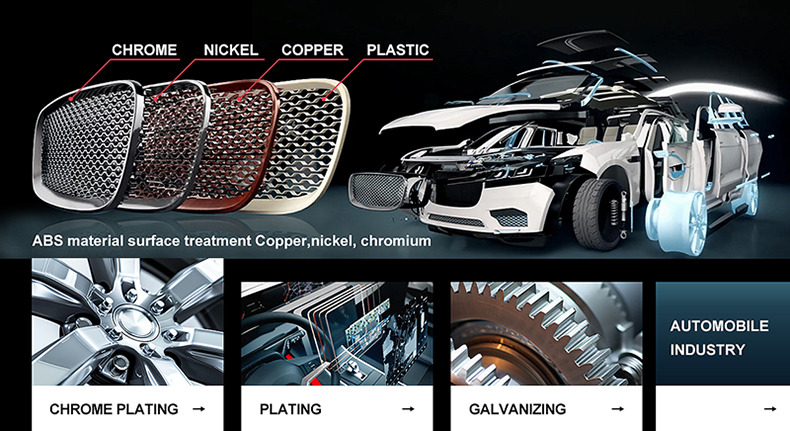
› RS485 digital control function
› High power factor and high efficiency
› Reasonable structural design
› Only the radiator is in the air duct
› Effective sealing and isolation
› High protective properties
› Standard wiring and special wiring
› Practical and effective multiple protection system
› Full soft switching technology
› High reliability
Enhance Wear Resistance, Conductivity, and Reflectivity: By depositing a thin layer of a harder or more conductive material onto the surface of an object, electroplating significantly improves its wear resistance, allowing it to withstand friction and abrasion better. It also enhances conductivity, particularly in electronic and electrical components, by providing a smoother and more uniform surface for the flow of current. Additionally, certain metals, such as silver and chromium, can improve reflectivity, making electroplated surfaces ideal for mirrors, reflectors, and other optical applications. Improve Corrosion Resistance and Enhance Aesthetics: By creating a barrier between the base material and the environment, electroplating protects the object from corrosive elements like moisture, oxygen, and chemicals, thereby extending its lifespan. Furthermore, electroplating can add a decorative finish to an object, enhancing its aesthetic appeal. Whether it’s the shiny chrome finish on car bumpers or the gold plating on jewelry, electroplating adds a touch of elegance and sophistication. In summary, electroplating serves a dual purpose: it not only enhances the functional properties of an object but also improves its appearance and extends its durability.
› Copper Plating:
Purpose: Primarily used as a primer to enhance adhesion of subsequent plating layers and improve corrosion resistance.
Considerations: Copper is prone to oxidation, which forms copper oxide (copper green) that loses conductivity. Therefore, copper-plated products must undergo copper protection treatments.
› Nickel Plating:
Purpose: Used as a primer or for aesthetic purposes to enhance corrosion resistance and wear resistance. Chemical nickel plating is a modern process that offers wear resistance comparable to chrome plating.
Considerations: Note that many electronic products, such as DIN heads and N heads, no longer use nickel as a primer due to its magnetic properties, which can affect the electrical performance and passive intermodulation inside the device.
› Gold Plating:
Purpose: Improves conductive contact impedance and enhances signal transmission.
Considerations: Gold is highly stable but also the most expensive option.
› Palladium-Nickel Plating:
Purpose: Improves conductive contact impedance and enhances signal transmission. Offers better wear resistance than gold.
Advantages: Combines the benefits of palladium’s corrosion resistance and nickel’s hardness.
› Tin-Lead Plating:
Purpose: Improves soldering ability.
Considerations: Due to concerns about lead content, tin-lead plating is being phased out and replaced by alternatives such as bright tin and mist tin plating.
› Silver Plating:
Purpose: Improves conductive contact impedance and enhances signal transmission.
Advantages: Silver offers the best electrical conductivity among these metals and is relatively resistant to oxidation, maintaining conductivity even after oxidation.
Considerations: While silver’s performance is excellent, its cost and tendency to tarnish over time should be considered.
the choice of plating type depends on the specific requirements of the application, including corrosion resistance, wear resistance, electrical conductivity, cost, and environmental considerations.
Cathode: The plated object, specifically referring to various connector terminals or other metallic surfaces that are intended to receive the electroplated coating. The cathode serves as the surface where the desired metal ions are reduced and deposited as a solid layer.
Anode: Depending on the type of electroplating process, the anode can be either soluble or insoluble.
Soluble anode: This is the metal that is to be plated onto the cathode. During the electroplating process, metal ions from the anode dissolve into the plating solution and are then plated onto the cathode.
Insoluble anode: In some cases, especially when using precious metals like white gold or iridium oxide, an insoluble anode may be used. This anode does not dissolve during the process but serves as a source of electrons for the reduction reaction that occurs at the cathode.
Plating Solution: This is a solution that contains ions of the metal that is to be plated onto the cathode. The composition and concentration of the plating solution are crucial for achieving the desired plating properties, such as thickness, adhesion, and appearance.
Plating Tank: The tank that holds and stores the plating solution during the electroplating process. The tank must be able to withstand the corrosive effects of the plating solution and maintain a constant temperature to ensure consistent plating results. Strength, corrosion resistance, temperature resistance, and chemical compatibility are key considerations in selecting the material for the plating tank.
Rectifier: The equipment that provides the direct current (DC) power supply for the electroplating process. The rectifier converts alternating current (AC) from the main power supply into DC, which is then used to drive the electroplating reaction. The voltage and current output of the rectifier can be adjusted to control the rate of deposition and the thickness of the plated layer.
Additionally, other elements may also be involved in the electroplating process, such as filters to remove impurities from the plating solution, heaters to maintain the solution at a constant temperature, and stirrers to ensure uniform mixing of the solution.
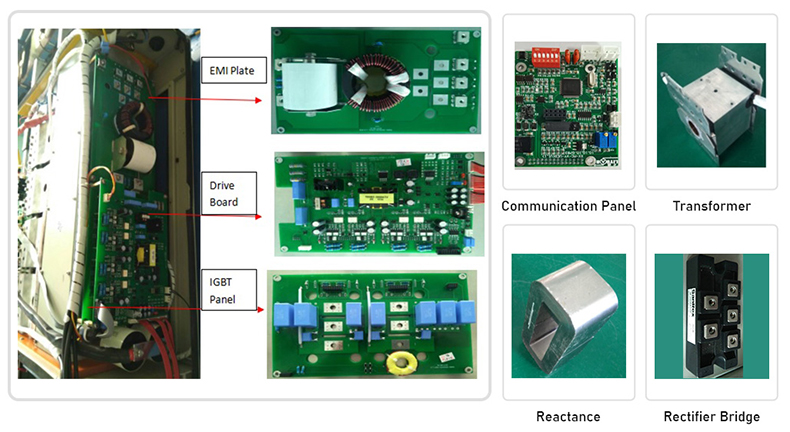
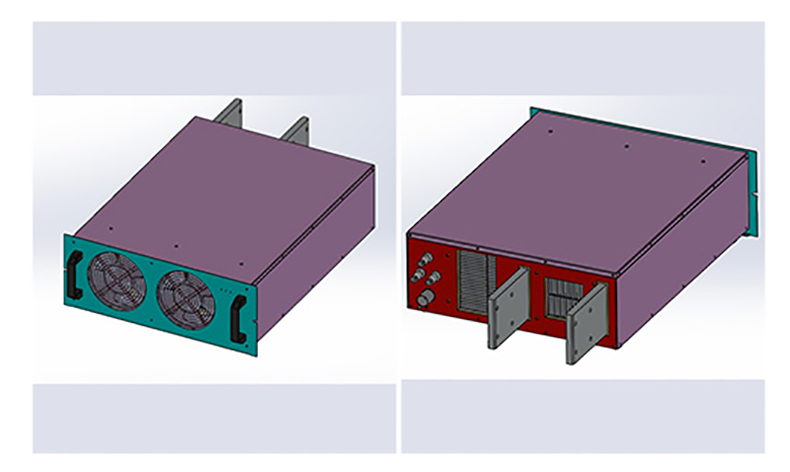
Air Cooling:Heat dissipation fan + air duct + comb heat sin
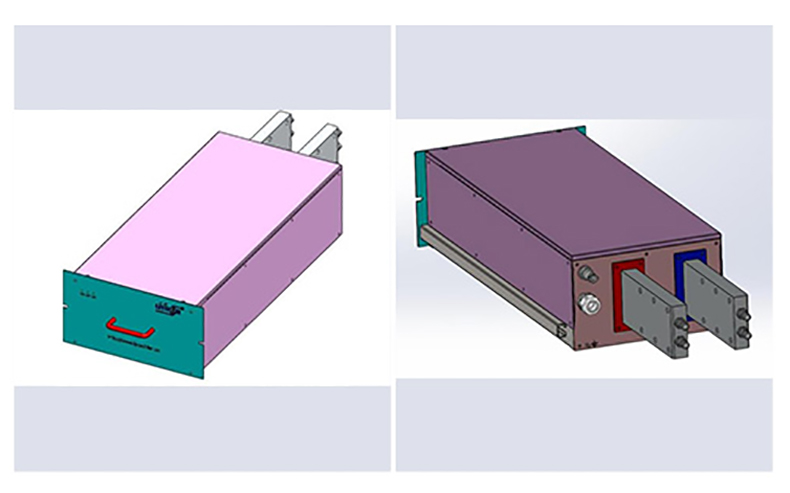
Water Cooling:Built-in water circulation line
| Feature Type | Parameter | Technical Requirements |
| Input feature | Rated input voltage | Single-phase AC220V±10% 50Hz,in line with the national power quality standards |
| Rated input current | AC 3.5A | |
| Rated input power | 0.78kVA | |
| Rated input power factor | COSΦ≥0.95 | |
| Output feature | Output voltage | Peak 0~±12V |
| Output current | Peak 0~50A | |
| Rated stabilized current precision | ≤1%(the rated current≥20%) | |
| Rated voltage precision | ≤1% | |
| Display precision | 0.01A,0.01V | |
| Rated output efficiency | ≥90% | |
| Insulation feature | Insulation strength | Input-output:AC1000V, 10 mA , 1 min |
| Input-shell: AC1000V, 10 mA , 1 min | ||
| Insulation resistance | Input-output: ≥5MΩ | |
| Input-shell: ≥5MΩ | ||
| Output-shell: ≥5MΩ | ||
| Protection features | It has self-protection function under abnormal conditions such as overvoltage, overcurrent, overload, short circuit and overheat | |
| Other features | Noise | ≤75dB |
| Operating status | The product can run full-loaded continuously. | |
| Load level | Level Ⅱ | |
| Insulation grade of the transformer | Grade B | |
| Weight | About 40KG | |
» Solution
Liyuan will keep up with the world’s latest technology closely, and uphold the concept of providing customers with high-quality power supplies and professional integrated services.
With advanced design and rich experience in rectifier manufacturing, we will provide the best power solutions as well as the most stable and efficient power supply for users both at home and abroad.
» Technical Capability
LIYUAN rectifier is the most competitive brand in China
Company relies on strong technology research and development cooperation basis, created a number of advanced technology, in recent 3 years amounted to more than 30 to apply for a patent, which has nearly 10 patents of invention.
Equipped with the national electric power transformation and control engineering technology research center (branch), and has set up a loan enterprise academician workstation.
Strict implementation of ISO quality management system, and through the CE safety certification, has been implementing ERP management for many years, to achieve the network, systematic computer control, the formation of a standard, efficient modern management system.
» Qualification certification
Liyuan adhere to innovation and the continuous improvement of power conversion efficiency and product quality.
The increasing R&D investment every year, and cooperation with China’s well-known universities, we has established the research center of national electric power conversion and control engineering technology.
Especially the related core patents of high-power synchronous rectifier power supply, stay ahead of the whole industry in China.
The ISO 9001 quality management system has been fully implemented in Liyuan, including quality inspection of components in warehouse, production process inspection, and final product inspection.
We adopt advanced scientific quality management system and the most stringent testing methods in the whole process to ensure the stability and reliability of products.

» Service
› Packing
1)Small size rectifier packing in carton box separately.
2)Large size rectifier will be packed in wooden case.
3)We guarantee that all the packing is intact when it reaches its destination.
› Shipping
1)30-45 Days after payment.
2)Transport: DHL, FEDEX, UPS, Air shipping, Boat shipping
3)You may choose our shipping partner or your own partner.
› Maintenance
We are pleasant to share our theory and experience on equipment maintenance with users.
We are pleasant to interact with users to collect their tips and know-hows on equipment maintenance.
The module “Maintenance” here is intended to help users solve various problems they possibly encounter during equipment maintenance…
If you need other power electroplating rectifiers, we can custom design them according to customer requirements. Please contact us.
Are you looking for PNPF-50A/±12V impulsing power source? Liyuan Haina Group is one of the professional manufacturers and suppliers in this field. With over 27 years of focus on R&D, design, production, sales, and technical services for industrial rectifiers, we have already exported our products to the United States, Canada, Britain, Italy, Spain, South Africa, Russia, the UAE, Japan, South Korea, Malaysia, and other parts of the world. Equipped with a productive factory, we warmly welcome you to purchase our high-quality, Made-in-China products at competitive prices or try our customized service.
Hot Tags:PNPF-50A/±12V impulsing power source,Electroplate Rectifier,plating rectifier manufacturers,electroplating rectifiers for sale,pulse plating rectifier
Liyuan Haina Rectifier, the professional manufacturer in IGBT and SCR rectifier, committed to providing you with quality solutions and products.
Get more details? We’ll response as soon as possible (within 12 hours).
Liyuan Haina Rectifier, the professional manufacturer in IGBT and SCR rectifier, committed to providing you with quality solutions and products.
Get more details? We’ll response as soon as possible (within 12 hours).